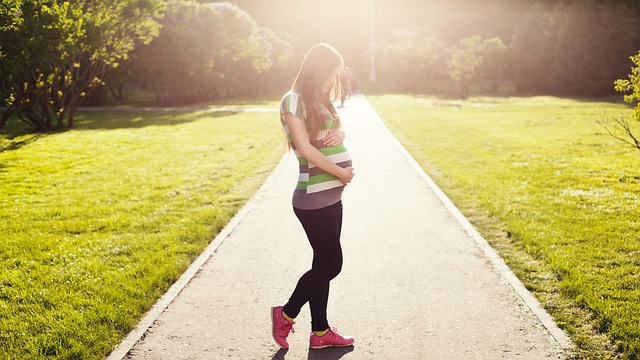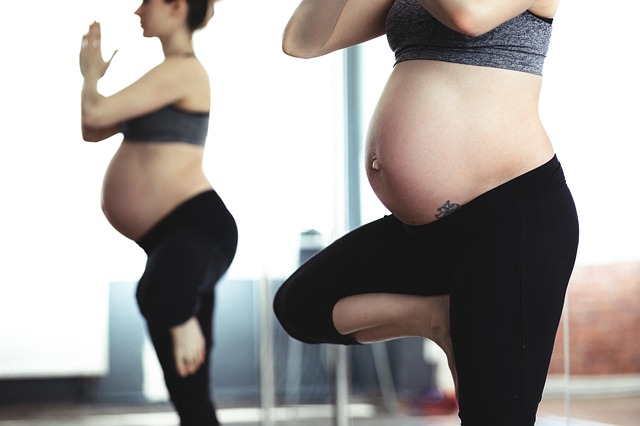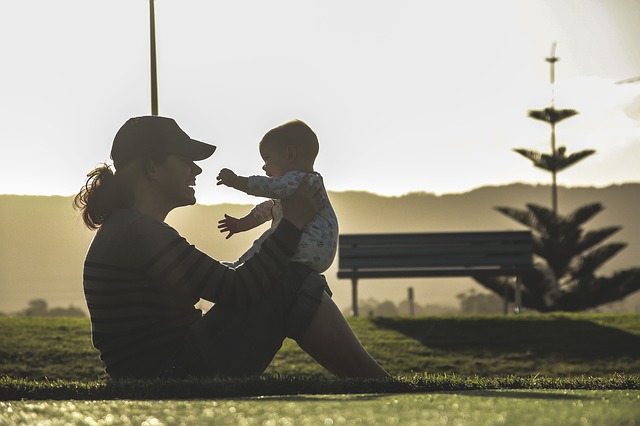The body goes through some pretty amazing changes during pregnancy.The spine can often take the brunt of the abuse from your roommate during these 9 months. We sat down with Dr. Matt Chapman from OrthoCarolina's Spine Center to get more information on how pregnancy impacts your spine and what you can do to support your spine during pregnancy.
- Natural support. The normal curvatures of the spine, lordosis in the lumbar spine, and kyphosis of the thoracic spine are a big part of the natural support of the spine for pregnancy.There is a significant amount of mobility in the lumbar spine that that can allow spinal alignment to change through the course of pregnancy and including childbirth to allow for women to carry and deliver children. Furthermore, the strong ligaments around the lumbar spine and the pelvis can respond to hormonal changes in order to relax and allow the woman's pelvis to carry and deliver a child.
- Adaptation. Over the course of pregnancy, a woman’s spine will adapt to being pregnant through a multitude of changes.First and foremost, with the growth of the fetus, there will be more weight anteriorly. This will cause the spine to bend more back (or into increase lordosis) in the lumbar spine. With the mobility and flexibility of the spine, the spinal column is able to tolerate and accommodate these changes. Furthermore, the hormonal changes that occur during pregnancy Can lead to some changes in the musculature and ligamentous structure of the spine. This can contribute to pain during pregnancy by allowing increased motion. Following pregnancy, the spine will typically return to its pre-pregnancy condition.

- Get ready. Preparing for pregnancy can be very beneficial. Specifically, maintaining a healthy lifestyle, engaging in regular activity, and strengthening the core can best prepare the woman's body for pregnancy. Preparing for the stresses and strains of pregnancy can protect and support to the spine through pregnancy. Some known risk factors for back pain during pregnancy are back pain prior to pregnancy, body mass index, and weight gain during pregnancy.
- Help along the way. As women transition through pregnancy, Up to 80% of patients may experience back pain. This pain is typically located in the low back, the lumbar spine. Typically, the most effective modality for reducing or diminishing the pain associated with pregnancy is activity.Muscle activation through weight-bearing exercises using one's own body weight has been shown to diminish the amount of pain women experience during pregnancy. Aquatic therapy, or water therapy, has been shown to decrease the amount of pain that limits experience during pregnancy. Specific to trimesters, as the baby grows, there seems to be more forward flexion of a woman spine. Working to strengthen the extension muscles of the spine before and during the 1st couple of trimesters may help reduce the amount of discomfort and pain a woman experiences during the 3rd trimester.

- Simple changes.Taking care to take breaks during pregnancy can be important to give the musculature of the spine are rest. At the same time, engaging the muscles on a daily basis can be important in order to maintain a healthy spine musculature and tolerate the latter stages of pregnancy better. It is harder to care for yourself when you are having baby #2, 3 etc and we can’t always rest and put our feet up like we did with baby #1. How can moms continue to take care of their backs when they can’t sit and rest? Are there any stretches and or exercises that they can do or stretches they can do and their little ones involved? Interestingly, in reviewing some medical literature, the number of children a woman has does not seem to affect the amount of back pain women experience during pregnancy.That being said, it can certainly be more challenging to take care of yourself when there are other little ones involved. Involving the other little ones can be challenging, but there seems to be growing trend of children's yoga, children stretching, and exercises. Going to a local park where there are climbing and jumping activities can engage not only the other children but also Mom. Engaging the whole family can be beneficial to achieving the goal of increasing activity, stretching, and exercising.
- Common issues. The most common spine related medical issue is back pain. Some women can experience progression or worsening of their scoliosis, though this is the exception, not the rule. Typically these exacerbations of pain are muscular or myofascial in nature and do not impart long-term implications.
- Postpartum spine. Typically, yes, the spine will return to normal in the postpartum. There are certainly challenges to this in the immediate postpartum period, but with increased independence and increased activity, most women are able to return to their pre-pregnancy state in the postpartum.
- Postpartum spine care. In the postpartum period, Maintaining posture throughout the new challenges of having a newborn can help protect and preserve the spine.Breastfeeding, if undertaken, can change the alignment of the spine particularly the bending forward. Elevating a newborn child on a pillow can help bring the child to the mother and diminish this forward flexion that can cause upper back and neck pain. Maintaining healthy lifting posture, bending with the hips and knees as opposed to the spine, can reduce the amount of pain experienced in the postpartum period. Furthermore, activating the core muscles (the extensor muscles of the spine as well as re-engaging the abdominal muscles) can help to support the postpartum spine.

- Chronic conditions. Some chronic conditions, such as scoliosis, can be challenging during pregnancy. There are several facets that can be addressed. First and foremost, as discussed previously, pre-existing back pain can be worsened in pregnancy. If there is a planned pregnancy, seeking evaluation and treatment prior to pregnancy can be beneficial to diminish the risk for pregnancy associated back pain. With respect to scoliosis, there can be some progression or worsening of scoliosis in some cases. Again, this is the exception and not the rule. If there is worsening of scoliosis during pregnancy, it tends not to return to the pre-pregnancy state. For women who previously had spine fusions, be that for scoliosis or other conditions, this can impact an anesthesiologist’s ability to place an epidural during delivery, if desired. It is important to let the obstetrician know about these conditions early in the pregnancy as they can affect delivery and need to be discussed beforehand, if possible.

s clinical practice centers on pediatric and adult spinal deformities. He specializes in spinal diseases of the cervical, thoracic, lumbar spine, tailoring a treatment plan for each patient individually to attain the best outcome. These conditions include pediatric, adult, and complex spinal deformity including congenital, adolescent, and adult idiopathic scoliosis and kyphosis as well as revision spine surgery. Furthermore, Dr. Chapman treats patients with degenerative cervical, thoracic, and lumbar spine disease-causing spinal stenosis, radiculopathy, and myelopathy. These diseases include disc herniation, spondylolisthesis, sciatica, spine disorders in athletes, spine fractures, spine tumors/cancers, metastatic spine tumors/cancers. Treatment options can include a combination of decompression, instrumentation, fusion, motion preservation, and cervical disc replacement using both traditional and minimally invasive surgical techniques.

Find an OrthoCarolina near you
Follow OrthoCarolina on Facebook, Twitter, Instagram and YouTube


